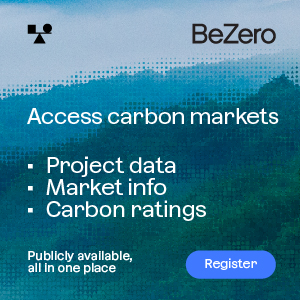The Canadian government will press ahead with plans to impose a nationwide minimum carbon price despite opposition from some provinces and territories, but it will likely be higher than C$15/tonne, local media has reported.
Canadian Environment Minister Catherine McKenna said that a carbon price will be a “very important” feature of new national climate change strategy, The Canadian Press reported Friday, but anonymous federal sources told the outlet that the C$15 floor price, which had been previous cited by media, is “very premature speculation” and has not been discussed.
The Globe and Mail newspaper, also citing anonymous sources within the federal government, on Sunday reported that Ottawa is not currently proposing a specific level but that any eventual floor price would be in excess of C$15 and rise annually.
Prime Minister Justin Trudeau will meet with provincial and territorial leaders on Thursday in Vancouver to discuss a new climate strategy for Canada, after which four working groups will be established to focus on areas including carbon pricing, cleantech and innovation, mitigation, and adaptation.
McKenna said she expects the four groups to develop a package of measures following a six-month deliberation.
“One of those is a price on carbon,” she told The Canadian Press. “Most big energy companies have an internal price on carbon, because they know this is going to happen.”
According to earlier reports, a likely scenario would see Ottawa set a minimum price for CO2 emissions that will increase annually, helping to level the playing field between Canada’s provinces while attempting to prevent domestic carbon leakage.
The federal government would then give the provinces that don’t already have carbon pricing one year to design a strategy based on the floor price, and those that fail to come up with a plan would face a federally-imposed tax that channels proceeds back to Ottawa.
The four working groups will also analyse different heavy emitting sectors, including energy, buildings and transportation, to determine the best policies for curbing their GHG output.
Following his election last October, Trudeau promised to announce new measures to combat climate change within 90 days of the end of December’s COP-21 talks in Paris.
British Columbia currently has a $30/tonne carbon tax, while Alberta will increase its CO2 levy to the same level in 2018 as it rolls out a hybrid tax and trading regime and caps emissions from its heavy-polluting oil sands.
Quebec has a carbon market that is linked to California’s under the WCI, through which prices are currently trading around C$17. Ontario confirmed last week that it is to launch a cap-and-trade scheme next year that will connect to that programme.
Canada’s four Atlantic provinces are also mulling introducing carbon pricing, either individually or in the form of a regional tax.
OPPONENTS
However, in the run-up to this week’s summit, premiers from Saskatchewan and Yukon have voiced opposition to the plan.
Saskatchewan’s Brad Wall has said he will refuse to sign up for carbon pricing in his province, claiming that it would “kneecap” industry. He has also called for any national climate initiatives to undergo an economic impact assessment in order to protect jobs.
Saskatchewan, which has developed a large oil and gas industry over the past decade, has lost around 200,000 jobs due to the global drop in oil prices.
Wall has also suggested that Canadian law may prevent Ottawa from being able to impose a carbon tax on utility SaskPower and gas company SaskEnergy, two of the province’s largest emitters, because they are crown corporations.
He said he could eventually see some type of carbon tax being introduced, but it would need to be a regime that targets heavy emitters uses the revenue to fund CO2-cutting projects such as the carbon capture and storage facility at SaskPower’s Boundary Dam power station.
Leader of the right-wing Saskatchewan Party, Wall is up for re-election in April and is currently leading in the polls.
Meanwhile, Manitoba’s NDP Premier Greg Selinger, who in December announced his own provincial climate plan that included launching a cap-and-trade scheme under the WCI, has also voiced reluctance towards the idea of pushing higher costs onto consumers via a wide-reaching carbon price.
Manitoba’s proposed plan targets only the province’s largest emitters and exempts fossil fuel distributors, who are covered in Quebec, California, and soon-to-be Ontario.
Selinger is also up for re-election in April, but with the PC party holding a commanding lead in the polls, his initiative may fail to be realised.
By Mike Szabo – mike@carbon-pulse.com



